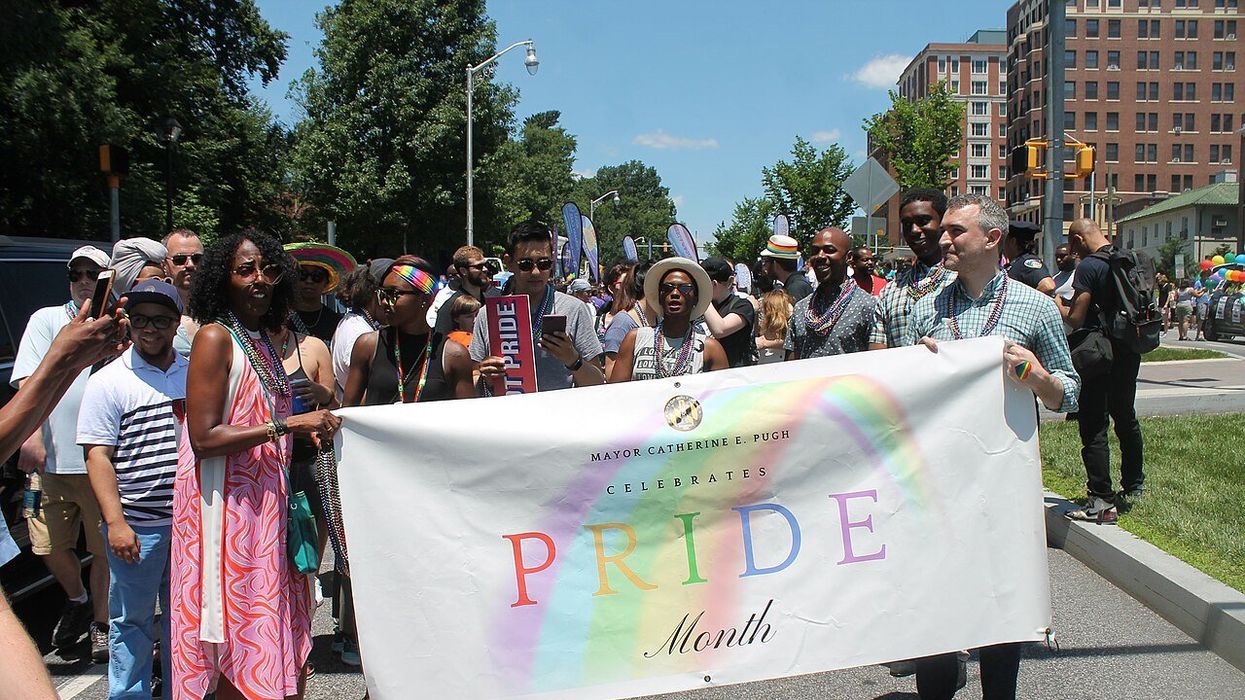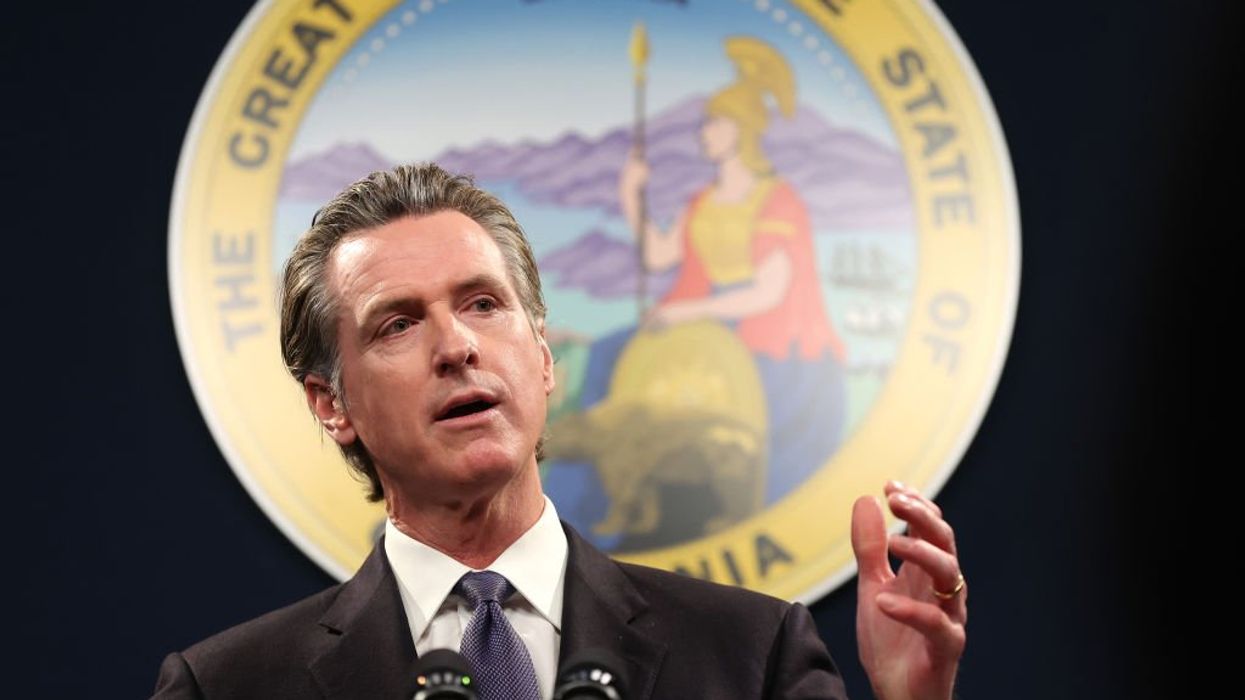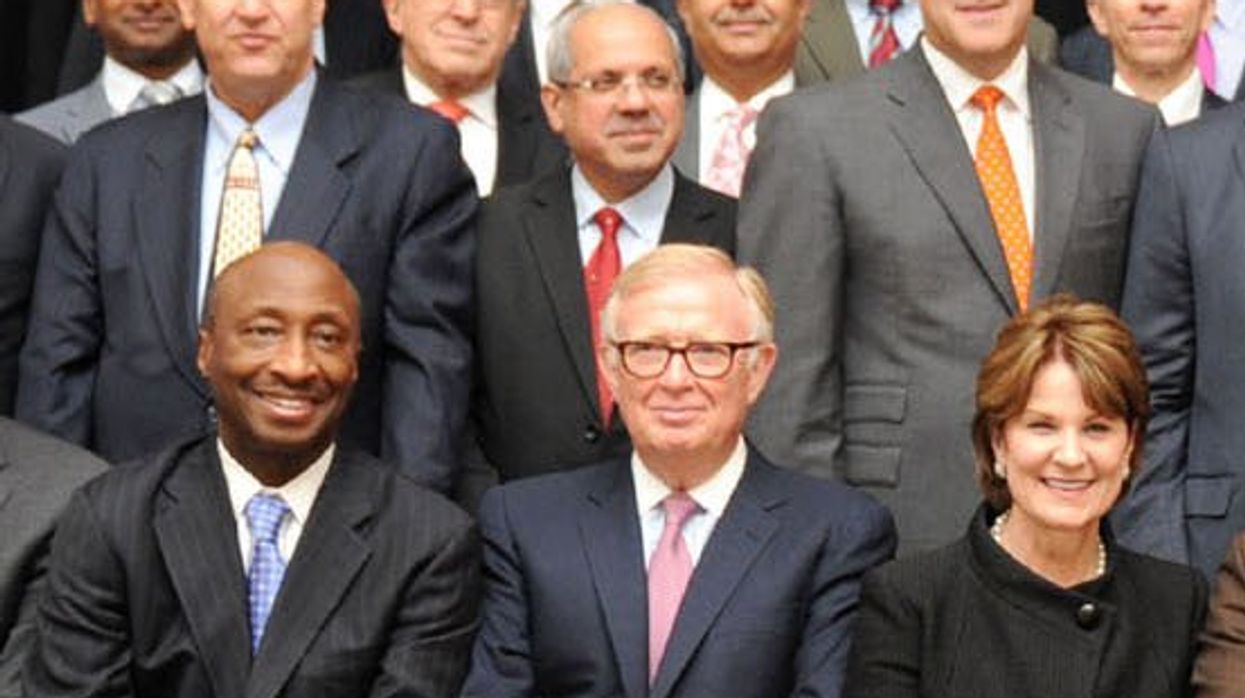
Former U.S. Rep. Tim Huelskamp, a Republican, signed a $2 million state contract on behalf of the newly formed Kansas Pregnancy Care Network to create an anti-abortion public awareness campaign and deliver resources statewide to encourage women with unplanned pregnancies to give birth. Gov. Laura Kelly had vetoed the appropriation, but was overridden by the 2023 Legislature.
(Photo by Sherman Smith/Kansas Reflector)
Based on Texas model
Johnson said Kansas Pregnancy Care Network was the only Kansas-based entity to submit a qualified bid to the Kansas Department of Administration. Other bidders were Real Alternatives of Harrisburg, Pennsylvania; Human Condition, of Plano, Texas; and Life Alliance Kansas, of Lawrence.
The state treasurer said the Kansas nonprofit landing the contract would collaborate with the Texas Pregnancy Care Network, which was financed through the Texas Health and Human Services Commission.
In Texas, the program provided women assistance so they could “feel supported and confident in choosing childbirth.” The network in Texas sought to engage with pregnancy support centers, maternity residences, social service agencies and adoption centers to deliver “life-affirming” aid to women and to actively discourage abortion.
“KPCN’s ability to draw on the experience of their affiliated organization in Texas will allow them to hit the ground running in implementing this program as the Legislature intended, serving women facing the difficulties of an unplanned pregnancy,” Johnson said.
State law mandates the Kansas organization submit a report on their activities to the Legislature and Johnson by June 30, 2024.
Transparency ‘crucial’
Pilcher-Cook, who served in the Legislature from 2005 to 2020, said the $2 million would bring to the forefront a network of people with a history of dedicating time and passion to women with unplanned pregnancies. She said women in Kansas deserved the counsel of “trustworthy” organizations.
“It is an honor to work with the state treasurer’s office to support and enhance the efforts of Kansas pregnancy resource centers to empower a woman to welcome her child into the world,” Pilcher-Cook said. “It will be crucial to provide transparency, while ensuring the essential care is provided for these vulnerable women and families.”
Earlier this year, the Kansas governor vetoed a budget provision that earmarked $2 million in the current state budget to an anti-abortion contractor. Kelly said she didn’t believe oversight of a pregnancy program fell within duties of the state’s elected treasurer and expressed concern the Legislature was standing up an organization that would get involved with “largely unregulated pregnancy resource centers.”
“This is not an evidence-based approach or even an effective method for preventing unplanned pregnancies,” Kelly said.
The Legislature voted to override the Democratic governor with the required two-thirds majorities on votes of 29-11 in the Senate and 86-38 in the House.
The GOP-dominated Legislature crafted the legislation after Kansas voters rejected in August 2022 the proposed amendment to the Constitution that would have made it easier for lawmakers to restrict access to abortion.
Supporters of the amendment had sought to nullify a decision by the Kansas Supreme Court identifying a foundational constitutional right to bodily autonomy, which included the right of a woman to terminate or continue a pregnancy. Prior to that statewide vote, the U.S. Supreme Court struck down the Roe v. Wade decision establishing the nationwide right to abortion.
Kansas Reflector is part of States Newsroom, a network of news bureaus supported by grants and a coalition of donors as a 501c(3) public charity. Kansas Reflector maintains editorial independence. Contact Editor Sherman Smith for questions: info@kansasreflector.com. Follow Kansas Reflector on Facebook and Twitter.
September 06, 2023
TOPEKA — Kansas awarded a $2 million contract to start a state program aimed at influencing women with unplanned pregnancies to give birth and to accept guidance of a new nonprofit organization directed by some of the state’s most vocal and dedicated opponents of abortion rights.
State Treasurer Steven Johnson, a former Republican member of the Kansas House, was given responsibility by the 2023 Legislature for choosing an entity to launch a statewide public awareness program steering women away from abortion clinics and to provide services useful in carrying a pregnancy to full term. On Tuesday, he confirmed the deal was signed last month and became effective Aug. 23. It allowed the organization to receive a $50,000 cash advance as start-up capital.
The Alternatives to Abortion bill was vetoed by Gov. Laura Kelly, but the GOP-controlled House and Senate overrode the governor.
Johnson selected the Kansas Pregnancy Care Network headquartered in Mission and founded June 30. The nonprofit’s directors include former state Sen. Mary Pilcher-Cook, former U.S. Rep. Tim Huelskamp and Vicki Tiahrt, the wife of former U.S. Rep. Todd Tiahrt. State documents indicated Huelskamp, who served in the Kansas Senate prior to Congress, was named president of Kansas Pregnancy Care Network.
Another director is Ron Kelsey, the president of Planned Parenthood Exposed who claimed the 2022 defeat of the proposed Kansas Constitutional amendment designed to restrict abortion rights could lead to an annual increase of 100,000 abortions in Kansas. His wife, Donna, is executive director of Kansas City Pregnancy Clinic, which operates in Kansas City, Kansas, and provides services the Legislature was targeting with the $2 million.
“I am pleased that a group of Kansans has organized in response to our request for proposals and submitted the successful bid,” Johnson said.
TOPEKA — Kansas awarded a $2 million contract to start a state program aimed at influencing women with unplanned pregnancies to give birth and to accept guidance of a new nonprofit organization directed by some of the state’s most vocal and dedicated opponents of abortion rights.
State Treasurer Steven Johnson, a former Republican member of the Kansas House, was given responsibility by the 2023 Legislature for choosing an entity to launch a statewide public awareness program steering women away from abortion clinics and to provide services useful in carrying a pregnancy to full term. On Tuesday, he confirmed the deal was signed last month and became effective Aug. 23. It allowed the organization to receive a $50,000 cash advance as start-up capital.
The Alternatives to Abortion bill was vetoed by Gov. Laura Kelly, but the GOP-controlled House and Senate overrode the governor.
Johnson selected the Kansas Pregnancy Care Network headquartered in Mission and founded June 30. The nonprofit’s directors include former state Sen. Mary Pilcher-Cook, former U.S. Rep. Tim Huelskamp and Vicki Tiahrt, the wife of former U.S. Rep. Todd Tiahrt. State documents indicated Huelskamp, who served in the Kansas Senate prior to Congress, was named president of Kansas Pregnancy Care Network.
Another director is Ron Kelsey, the president of Planned Parenthood Exposed who claimed the 2022 defeat of the proposed Kansas Constitutional amendment designed to restrict abortion rights could lead to an annual increase of 100,000 abortions in Kansas. His wife, Donna, is executive director of Kansas City Pregnancy Clinic, which operates in Kansas City, Kansas, and provides services the Legislature was targeting with the $2 million.
“I am pleased that a group of Kansans has organized in response to our request for proposals and submitted the successful bid,” Johnson said.
Based on Texas model
Johnson said Kansas Pregnancy Care Network was the only Kansas-based entity to submit a qualified bid to the Kansas Department of Administration. Other bidders were Real Alternatives of Harrisburg, Pennsylvania; Human Condition, of Plano, Texas; and Life Alliance Kansas, of Lawrence.
The state treasurer said the Kansas nonprofit landing the contract would collaborate with the Texas Pregnancy Care Network, which was financed through the Texas Health and Human Services Commission.
In Texas, the program provided women assistance so they could “feel supported and confident in choosing childbirth.” The network in Texas sought to engage with pregnancy support centers, maternity residences, social service agencies and adoption centers to deliver “life-affirming” aid to women and to actively discourage abortion.
“KPCN’s ability to draw on the experience of their affiliated organization in Texas will allow them to hit the ground running in implementing this program as the Legislature intended, serving women facing the difficulties of an unplanned pregnancy,” Johnson said.
State law mandates the Kansas organization submit a report on their activities to the Legislature and Johnson by June 30, 2024.
Transparency ‘crucial’
Pilcher-Cook, who served in the Legislature from 2005 to 2020, said the $2 million would bring to the forefront a network of people with a history of dedicating time and passion to women with unplanned pregnancies. She said women in Kansas deserved the counsel of “trustworthy” organizations.
“It is an honor to work with the state treasurer’s office to support and enhance the efforts of Kansas pregnancy resource centers to empower a woman to welcome her child into the world,” Pilcher-Cook said. “It will be crucial to provide transparency, while ensuring the essential care is provided for these vulnerable women and families.”
Earlier this year, the Kansas governor vetoed a budget provision that earmarked $2 million in the current state budget to an anti-abortion contractor. Kelly said she didn’t believe oversight of a pregnancy program fell within duties of the state’s elected treasurer and expressed concern the Legislature was standing up an organization that would get involved with “largely unregulated pregnancy resource centers.”
“This is not an evidence-based approach or even an effective method for preventing unplanned pregnancies,” Kelly said.
The Legislature voted to override the Democratic governor with the required two-thirds majorities on votes of 29-11 in the Senate and 86-38 in the House.
The GOP-dominated Legislature crafted the legislation after Kansas voters rejected in August 2022 the proposed amendment to the Constitution that would have made it easier for lawmakers to restrict access to abortion.
Supporters of the amendment had sought to nullify a decision by the Kansas Supreme Court identifying a foundational constitutional right to bodily autonomy, which included the right of a woman to terminate or continue a pregnancy. Prior to that statewide vote, the U.S. Supreme Court struck down the Roe v. Wade decision establishing the nationwide right to abortion.
Kansas Reflector is part of States Newsroom, a network of news bureaus supported by grants and a coalition of donors as a 501c(3) public charity. Kansas Reflector maintains editorial independence. Contact Editor Sherman Smith for questions: info@kansasreflector.com. Follow Kansas Reflector on Facebook and Twitter.











